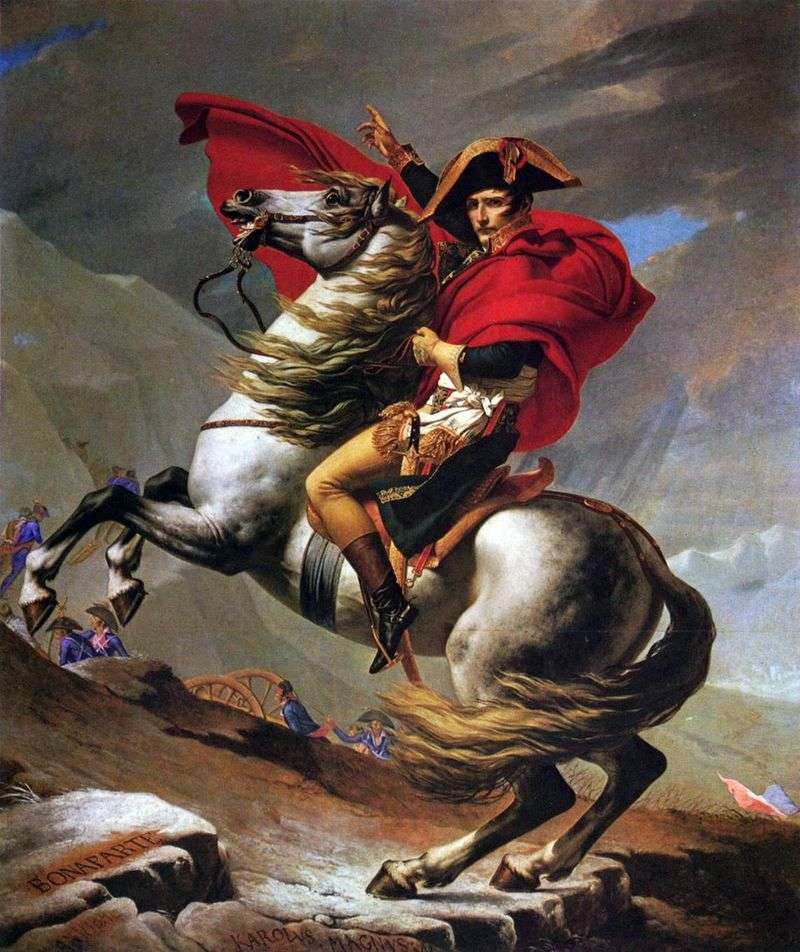
David – the founder of French neoclassicism, artistically rethought the standards of classicism and updated them in accordance with the era. A fiery revolutionary, a supporter of the French Revolution, devoted to Napoleon and who believed that he was capable of giving the world what he needed.
“Napoleon on the Pass Saint Bernard” – the whole production picture. It was not written in order to convey the historical reality and recall how everything was – it was created to further exalt Napoleon, to give it a shiny image. The horse climbed up. A cloak sings in the wind.
With a regal gesture, Napoleon points ahead, to where his army should come. Under the hoofs of the horse, on the stones that seem to be no longer a pedestal, the names “Hannibal”, “Charlemagne” and “Napoleon” are the great generals who walked this way.
The solemnity and pathos of the picture are determined by its purpose. It must be so, because on it Napoleon must be a formidable giant, a conqueror, before which the kings and countries bowed.
In fact, everything was a bit wrong. Napoleon captured Italy, this is true. He reached it through the Saint Bernard Pass, because from there he was least expected. It never occurred to anyone that he would lead his troops through the passes. But there was no solemnity in this – on the contrary. The army was drowning in the snow. Guns removed from the wheels, pulled on the sleigh people – no livestock could not stand this kind of weather. Many soldiers died from the cold.
Napoleon himself once nearly died – the mule stumbled on a steep slope and the commander almost flew into the abyss. It was a great campaign, and the picture of David shows its inner essence, hiding behind the theatricality of the backs, behind the fierce clouds, how much blood and frostbitten people Napoleon left on that pass.
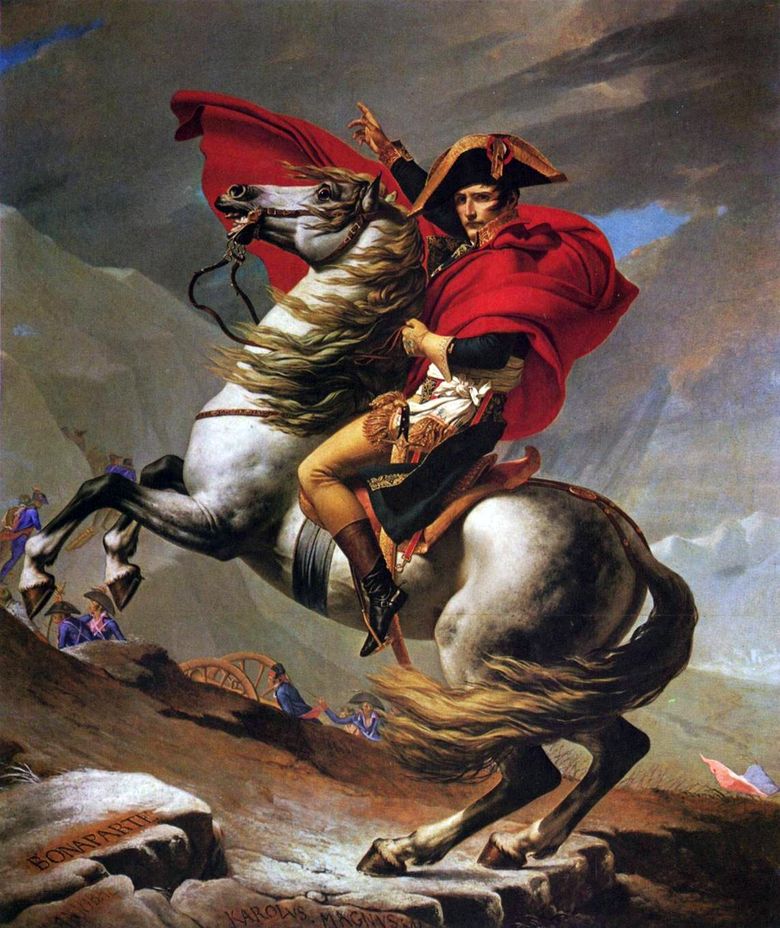 Napoléon au col du Saint-Bernard – Jacques-Louis David
Napoléon au col du Saint-Bernard – Jacques-Louis David The anointing of Napoleon I and the coronation of Josephine by Jacques Louis David
The anointing of Napoleon I and the coronation of Josephine by Jacques Louis David Portrait of Napoleon in the Imperial Study by Jacques Louis David
Portrait of Napoleon in the Imperial Study by Jacques Louis David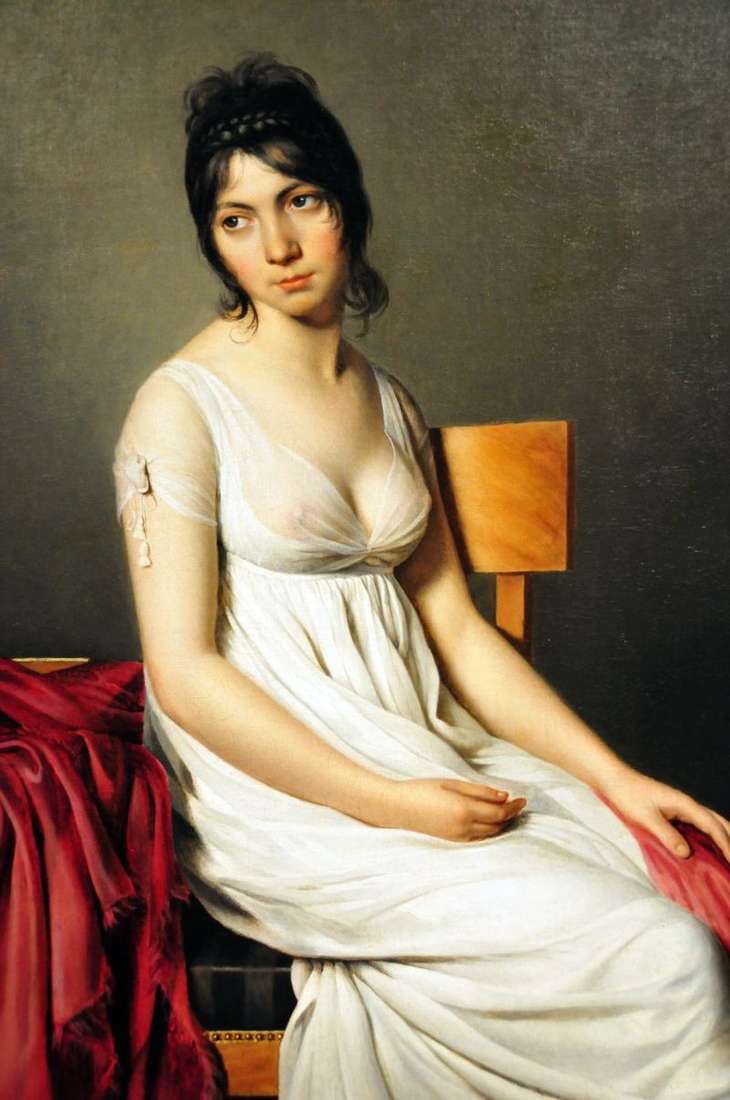 Portrait of Giovanna Donna in white by Jacques Louis David
Portrait of Giovanna Donna in white by Jacques Louis David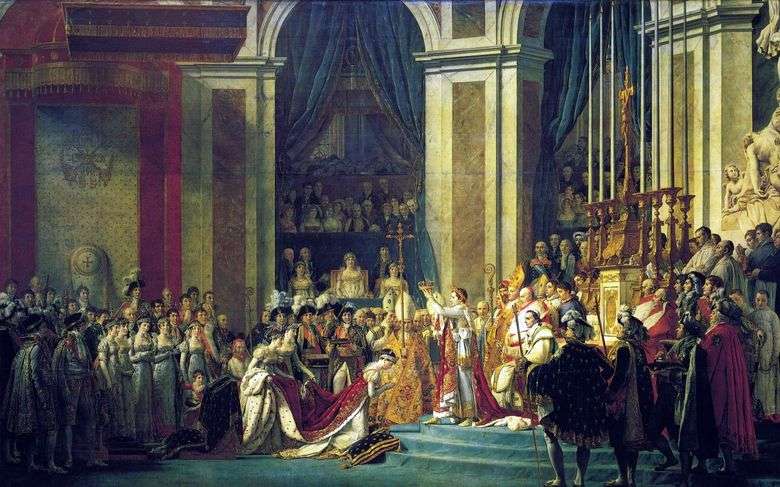 La Unción de Napoleón I y la Coronación de Josephine – Jacques Louis David
La Unción de Napoleón I y la Coronación de Josephine – Jacques Louis David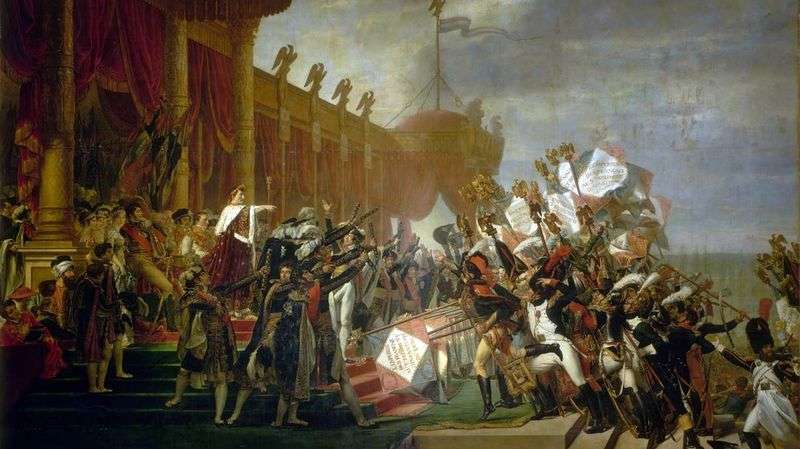 Distribution of eagles by Jacques Louis David
Distribution of eagles by Jacques Louis David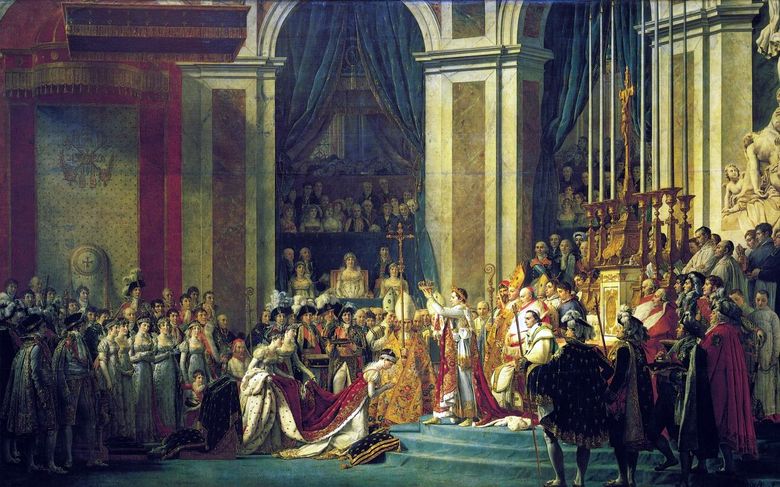 L’onction de Napoléon Ier et le couronnement de Joséphine – Jacques Louis David
L’onction de Napoléon Ier et le couronnement de Joséphine – Jacques Louis David Zinaida and Charlotte Bonaparte by Jacques Louis David
Zinaida and Charlotte Bonaparte by Jacques Louis David